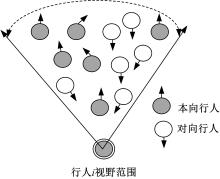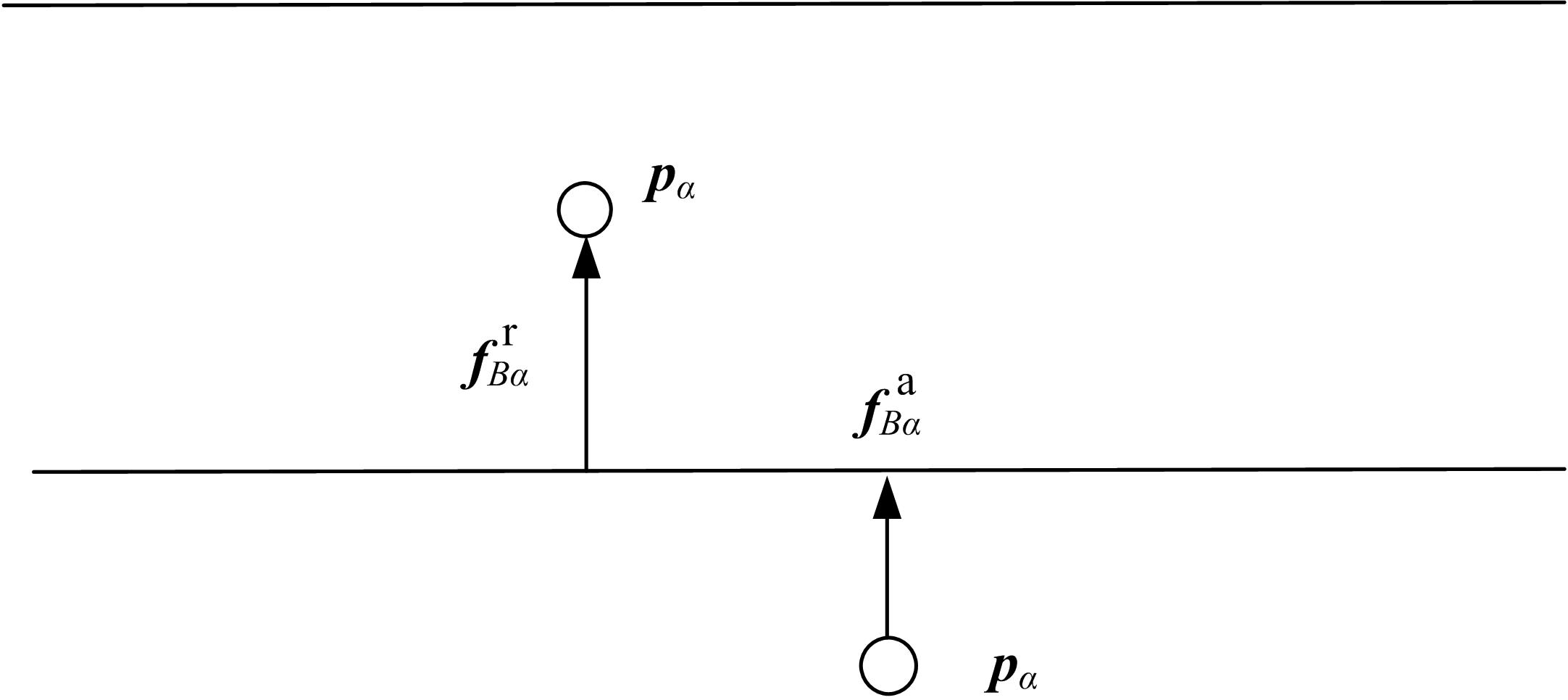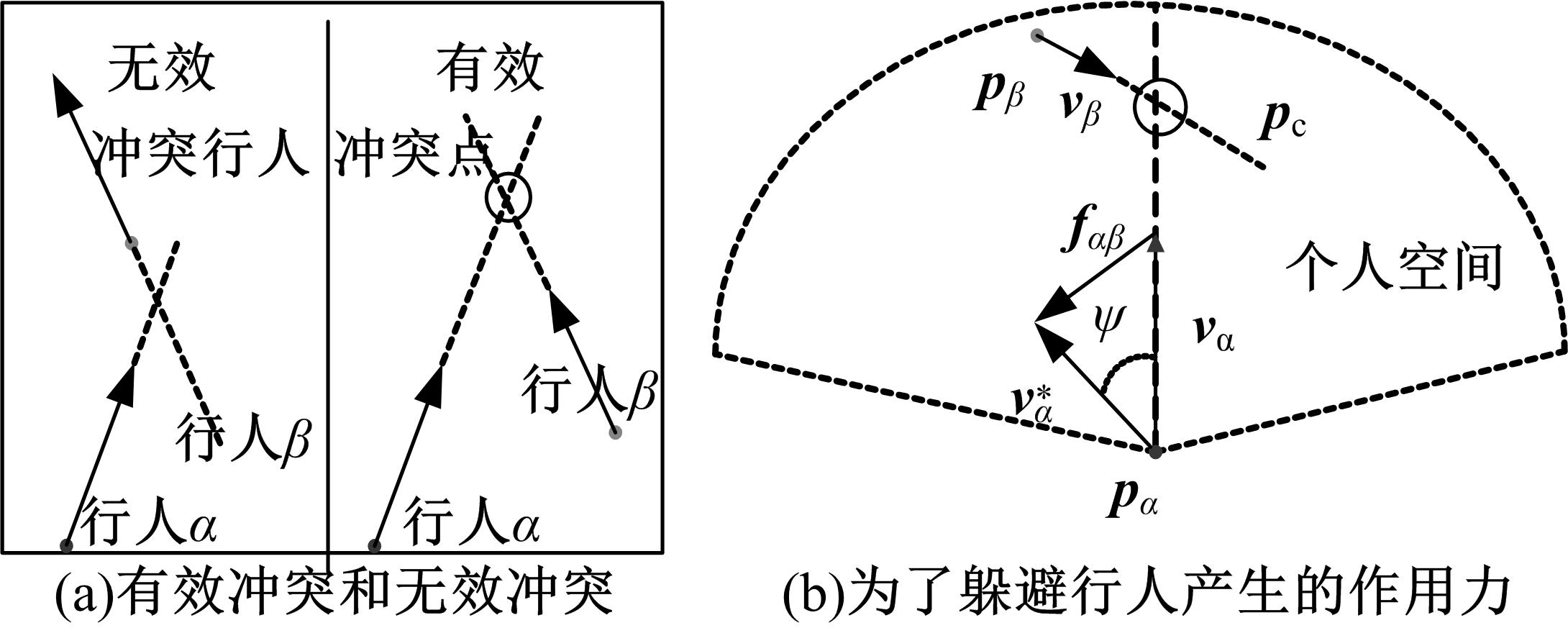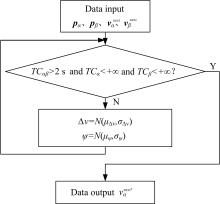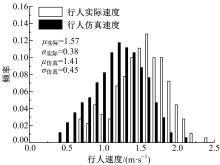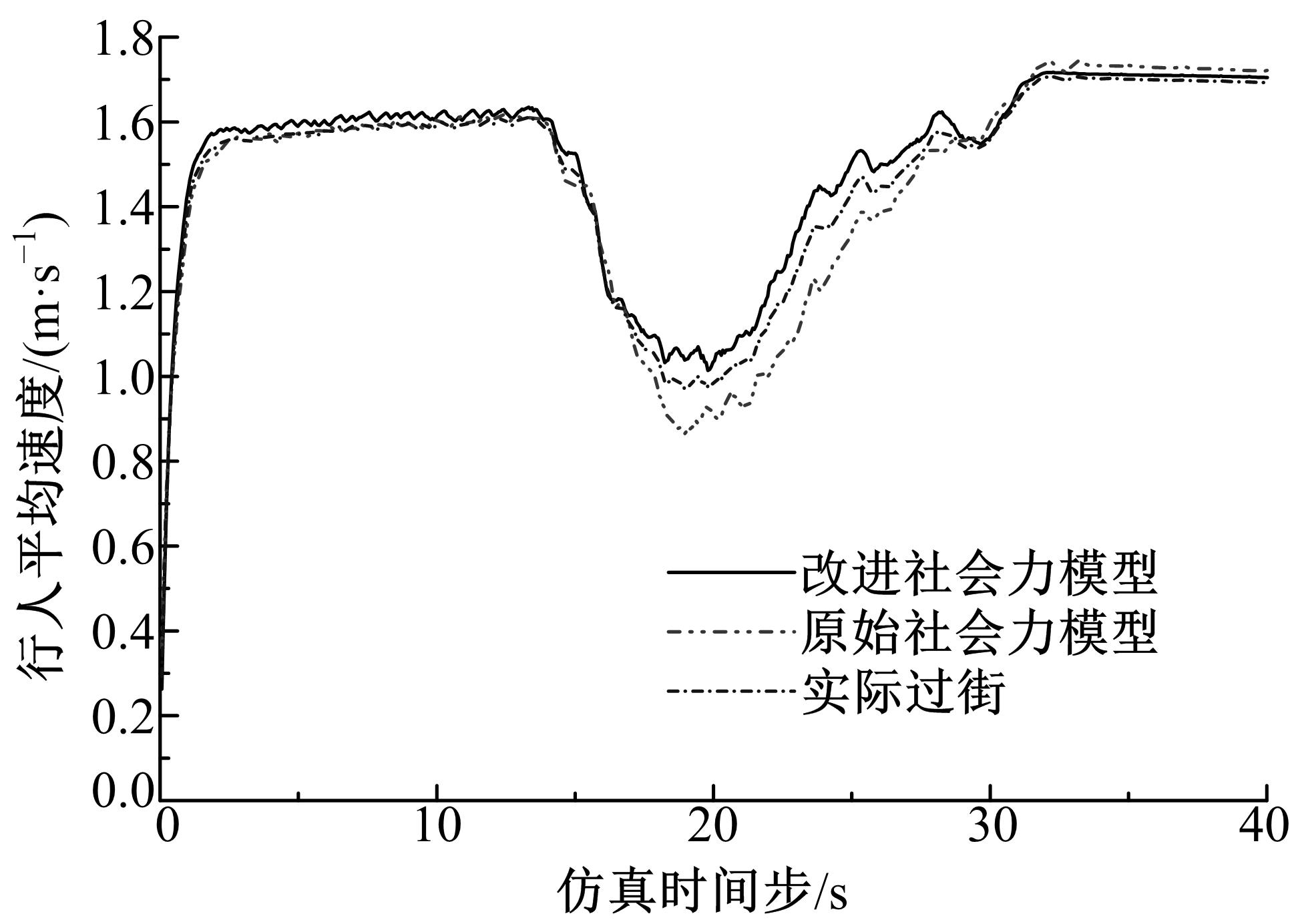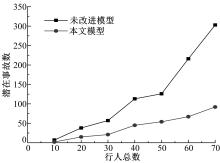吉林大学学报(工学版) ›› 2019, Vol. 49 ›› Issue (3): 688-694.doi: 10.13229/j.cnki.jdxbgxb20170612
考虑双向行人跟随行为的社会力模型
曹宁博1,2,赵利英3( ),曲昭伟1,陈永恒1,白乔文1,邓晓磊1
),曲昭伟1,陈永恒1,白乔文1,邓晓磊1
- 1. 吉林大学 交通学院,长春 130022
2. 长安大学 经济与管理学院,西安 710064
3. 西安理工大学 经济与管理学院,西安 710054
Social force model considering bi⁃direction pedestrian slipstreaming behavior
Ning⁃bo CAO1,2,Li⁃ying ZHAO3( ),Zhao⁃wei QU1,Yong⁃heng CHEN1,Qiao⁃wen BAI1,Xiao⁃lei DENG1
),Zhao⁃wei QU1,Yong⁃heng CHEN1,Qiao⁃wen BAI1,Xiao⁃lei DENG1
- 1. College of Transportation, Jilin University, Changchun 130022, China
2. School of Economics and Management, Chang'an University, Xi'an 710064, China
3. School of Economics and Management, Xi'an University of Technology, Xi'an 710054, China
摘要:
为在行人仿真模型中更全面地反映行人特性,并研究跟随行为对双向过街行人的影响,本文建立了考虑跟随行为和冲突避让的行人过街社会力模型。研究了跟随特性对行人行走行为的作用,建立了行人的跟随行为模型、人行横道和信号灯对行人的作用力和冲突避让力模型,提出了改进的行人过街社会力模型。通过数值仿真分析了行人过街速度和可能事故数的变化规律,结果表明:设置跟随力有利于提高整体行人的过街速度和过街效率;冲突避让模型能有效降低行人的可能事故数。
中图分类号:
- U491
| 1 | HelbingD, MolnarP. Social force model for pedestrian dynamics[J]. Physical review E,1995,51(5):4282⁃4286. |
| 2 | HelbingD, BuznaL, JohanssonA, et al. Self⁃organized pedestrian crowd dynamics: Experiments, simulations, and design solutions[J]. Transportation Science,2005,39(1):1⁃24. |
| 3 | MoussaïdM, PerozoN, GarnierS, et al. The walking behaviour of pedestrian social groups and its impact on crowd dynamics[J]. Plos One,2010,5(4):e10047. |
| 4 | ParisiD R, GilmanM, MoldovanH. A modification of the social force model can reproduce experimental data of pedestrian flows in normal conditions[J]. Physica A: Statistical Mechanics and its Applications,2009,388(17):3600⁃3608. |
| 5 | ApelM. Simulation of pedestrian flows based on the social force model using the verlet link cell algorithm[D]. Poznan: Institute of Computing Science Laboratory of Computing Systems,Poznan University of Technology,2004. |
| 6 | MoussaïdM, HelbingD, GarnierS, et al. Experimental study of the behavioural mechanisms underlying self⁃organization in human crowds[J]. Proceedings Biological Sciences,2009,276(1668):2755⁃2762. |
| 7 | 王占中,赵利英,焦玉玲,等. 信号交叉口自行车和行人混合交通流社会力模型[J]. 吉林大学学报:工学版,2018,48(1):89⁃97. |
| WangZhan⁃zhong,ZhaoLi⁃ying,JiaoYu⁃ling,et al. Social force model of pedestrian⁃bike mixed flow at signalized crosswalk[J]. Journal of Jilin University(Engineering and Technology Edition), 2018,48(1):89⁃97. | |
| 8 | 吴文静,王占中,马芳武. 从众心理影响下的行人群体行为演化博弈的仿真分析——以行人过街为例[J]. 吉林大学学报:工学版,2017,47(1):92⁃96. |
| WuWen⁃jing,WangZhan⁃zhong,MaFang⁃wu. Simulation analysis of evolutionary game of pedestrians′ group behaviors under influence of herd behavior:in case of crossing behavior[J]. Journal of Jilin University(Engineering and Technology Edition), 2017,47(1):92⁃96. | |
| 9 | 李珊珊,钱大琳,王九州. 考虑行人减速避让的改进社会力模型[J]. 吉林大学学报:工学版,2012,42(3):623⁃628. |
| LiShan⁃shan,QianDa⁃lin,WangJiu⁃zhou. Improved social force model considering pedestrian deceleration to avoid collision[J]. Journal of Jilin University(Engineering and Technology Edition), 2012,42(3):623⁃628. | |
| 10 | ZengWei⁃liang, ChenPeng, HidekiNakamura , et al. Application of social force model to pedestrian behavior analysis at signalized crosswalk[J]. Transportation Research Part C: Emerging Technologies,2014,40:143⁃159. |
| 11 | AsanoM, IryoT, KuwaharaM. Microscopic pedestrian simulation model combined with a tactical model for route choice behaviour[J]. Transportation Research Part C: Emerging Technologies,2010,18(6):842⁃855. |
| 12 | LiM, ShiF, ChenD. Analyze bicycle⁃car mixed flow by social force model for collision risk evaluation[C]∥3rd International Conference on Road Safety and Simulation, Indianapolis, USA,2011:1⁃22. |
| 13 | 江晟,王殿海,陈永恒,等. 基于视频的行人运动轨迹再现与过街行为表达[J]. 东南大学学报:自然科学版,2012,42(6):1233⁃1237. |
| JiangSheng,WangDian⁃hai,ChenYong⁃heng,et al. Pedestrian movement trajectory reappearance and crossing feature expression based on video processing[J]. Journal of Southeast University (Natural Science Edition),2012,42(6):1233⁃1237. | |
| 14 | 江晟,王殿海,赵莹莹,等. 混合交通特征表达及快速检测算法[J]. 吉林大学学报:工学版,2012,42(6):1459⁃1464. |
| JiangSheng,WangDian⁃hai,ZhaoYing⁃ying,et al. Feature characterization and rapid detection algorithm of hybrid traffic[J]. Journal of Jilin University(Engineering and Technology Edition), 2012,42(6):1459⁃1464. |
| [1] | 白乔文,曲昭伟,陈永恒,熊帅,陶楚青. 非严格优先权下无左转专用相位直行车辆轨迹模型建立[J]. 吉林大学学报(工学版), 2019, 49(3): 673-679. |
| [2] | 李志慧,钟涛,赵永华,胡永利,李海涛,赵景伟. 面向车辆自主驾驶的行人跟踪算法[J]. 吉林大学学报(工学版), 2019, 49(3): 680-687. |
| [3] | 罗小芹,王殿海,金盛. 面向混合交通的感应式交通信号控制方法[J]. 吉林大学学报(工学版), 2019, 49(3): 695-704. |
| [4] | 陈磊,王江锋,谷远利,闫学东. 基于思维进化优化的多源交通数据融合算法[J]. 吉林大学学报(工学版), 2019, 49(3): 705-713. |
| [5] | 尹超英,邵春福,王晓全. 考虑停车可用性的建成环境对小汽车通勤出行的影响[J]. 吉林大学学报(工学版), 2019, 49(3): 714-719. |
| [6] | 凃强,程琳,林芬,孙超. 考虑出行者风险态度的最优路径搜索[J]. 吉林大学学报(工学版), 2019, 49(3): 720-726. |
| [7] | 陈永恒,刘芳宏,曹宁博. 信控交叉口行人与提前右转机动车冲突影响因素[J]. 吉林大学学报(工学版), 2018, 48(6): 1669-1676. |
| [8] | 常山,宋瑞,何世伟,黎浩东,殷玮川. 共享单车故障车辆回收模型[J]. 吉林大学学报(工学版), 2018, 48(6): 1677-1684. |
| [9] | 曲大义,杨晶茹,邴其春,王五林,周警春. 基于干线车流排队特性的相位差优化模型[J]. 吉林大学学报(工学版), 2018, 48(6): 1685-1693. |
| [10] | 宗芳, 齐厚成, 唐明, 吕建宇, 于萍. 基于GPS数据的日出行模式-出行目的识别[J]. 吉林大学学报(工学版), 2018, 48(5): 1374-1379. |
| [11] | 刘翔宇, 杨庆芳, 隗海林. 基于随机游走算法的交通诱导小区划分方法[J]. 吉林大学学报(工学版), 2018, 48(5): 1380-1386. |
| [12] | 钟伟, 隽志才, 孙宝凤. 不完全网络的城乡公交一体化枢纽层级选址模型[J]. 吉林大学学报(工学版), 2018, 48(5): 1387-1397. |
| [13] | 刘兆惠, 王超, 吕文红, 管欣. 基于非线性动力学分析的车辆运行状态参数数据特征辨识[J]. 吉林大学学报(工学版), 2018, 48(5): 1405-1410. |
| [14] | 宗芳, 路峰瑞, 唐明, 吕建宇, 吴挺. 习惯和路况对小汽车出行路径选择的影响[J]. 吉林大学学报(工学版), 2018, 48(4): 1023-1028. |
| [15] | 栾鑫, 邓卫, 程琳, 陈新元. 特大城市居民出行方式选择行为的混合Logit模型[J]. 吉林大学学报(工学版), 2018, 48(4): 1029-1036. |
|
||
